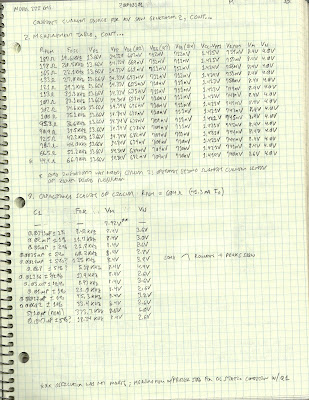Another one of the interesting discoveries I made using transistors in reverse-mode is that they can be used this way to build unusual sawtooth oscillators, using very few components. I discovered that the transistor in this reverse-mode of operation is also called a Negistor. Other than sawtooth waveform generation is also possible, like generation of RF frequencies.
Similar in operation to avalanche operation in the forward mode, but at a much lower voltage, the transistor acts like a Zener diode. But at the Zener (avalanche) voltage it very rapidly dumps current, unlike an actual Zener diode. For oscillations to occur, certain restrictions apply, such as using a minimum working current through the transistor, like 1.3 mA. Also, a high-enough voltage is required, but more like +15V, instead of hundreds of volts for forward-mode avalanche operation.
The oscillations were incredibly stable, in terms of voltage swing. Frequency was also surprising stable, but with some apparent small-ish drift. But by using a programmable current, the circuit configuratiion makes a VCO, and could thus easily form part of a Phase-Locked Loop (PLL). As well, a utility sawtooth oscillator for uncritical applications can be made with only three components: The Negistor, a resistor, and a capacitor! Also, I found that PN2222A transistors across a myriad of datecodes spanning decades — all worked exactly the same!
Data collected in 2003, connecting the avalanche oscillator with a variety of currents:
Similar in operation to avalanche operation in the forward mode, but at a much lower voltage, the transistor acts like a Zener diode. But at the Zener (avalanche) voltage it very rapidly dumps current, unlike an actual Zener diode. For oscillations to occur, certain restrictions apply, such as using a minimum working current through the transistor, like 1.3 mA. Also, a high-enough voltage is required, but more like +15V, instead of hundreds of volts for forward-mode avalanche operation.
The oscillations were incredibly stable, in terms of voltage swing. Frequency was also surprising stable, but with some apparent small-ish drift. But by using a programmable current, the circuit configuratiion makes a VCO, and could thus easily form part of a Phase-Locked Loop (PLL). As well, a utility sawtooth oscillator for uncritical applications can be made with only three components: The Negistor, a resistor, and a capacitor! Also, I found that PN2222A transistors across a myriad of datecodes spanning decades — all worked exactly the same!
Data collected in 2003, connecting the avalanche oscillator with a variety of currents:
A more recent 2017 experiment, where adding a normal-mode transistor enables gating the oscillator — a very handy way to have synchronization, and burst-operation.



Comments
Post a Comment